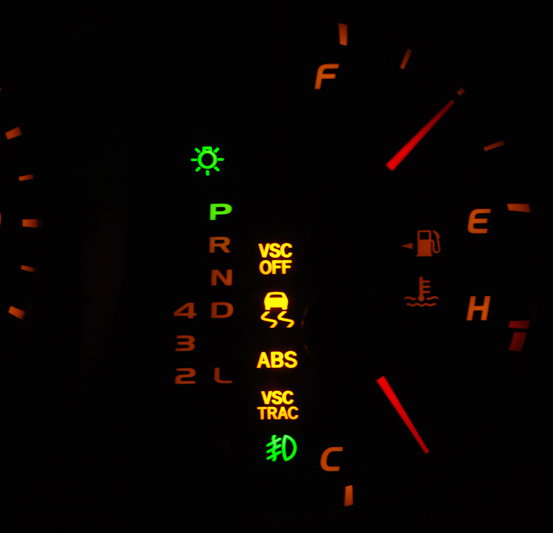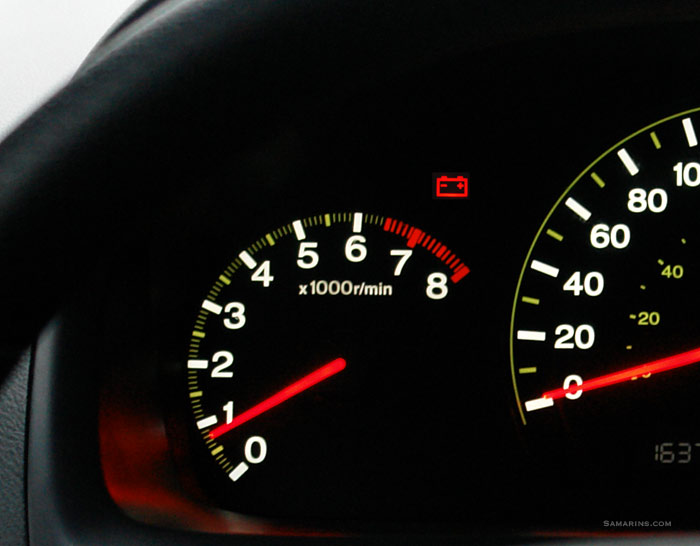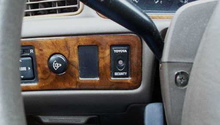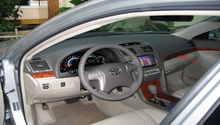Toyota Camry: Warning Lights
Warning lights appear on your dashboard during times of trouble. However, not all warning lights indicate a serious problem is at hand. Read on to learn how to properly diagnose problems with your Toyota Camry.
This article applies to the Toyota Camry (1997-2011).
It's dependable, affordable and sellable years after its purchase date; however, the Toyota Camry (like all family cars) can experience technical issues from time to time. While the majority of these technical issues will be small, and therefore reasonably inexpensive to resolve, some might be more significant and worrisome. Here's a rundown of the warning lights you'll need to be aware of while driving your Camry, and the problems you might facing if one or more of these warning lights flash on your dashboard.
Warning Lights
Supplemental Restraint System (SRS) Warning Light
This warning light is an important one to be on the lookout for while driving. It will alert you to a potential problem with your supplemental restraint system (or air bags). If the SRS light appears on your dashboard (and remains solid while you are driving), the issue could be related to a larger wiring problem within your overall air bags system or be the result of faulty installation. Fifth and sixth generation models are equipped with both seat belt and occupant detection sensors. If your air bags are turned off while an occupant is detected, the SRS light could appear on your dashboard. Either way, have a local Toyota dealer or certified mechanic check your air bags system for damage.

Anti-lock Brake System (ABS) Warning Light
Your first course of action when the ABS light appears on your dashboard should be to check your brake fluid level, brake pads, and brake lines for damage. While you are under the hood of your truck, check for leaks in the brake fluid reservoir, as well. If you are joined by a helper, have the person run the engine while simultaneously pressing down on the brake pedal. For added measure, have your helper feel for sponginess in the brake pedal, while you listen for mechanical noises, such as squeaking, within either the ABS or normal braking system. If you own an on-board diagnostic (OB-D) tool, check your car's trouble codes for an immediate indication of the problem afflicting your anti-lock brake system. If you don't own an OB-D tool, a mechanic will usually agree to run your car's trouble codes at a cost to you of around $100.

Battery Warning Light
A number of issues could cause the battery warning light to appear on your dashboard, including a weak or heavily corroded battery (along the terminals). Other more complex issues could be occurring in relation to your alternator, including, but not limited to, problems with the connectors that plug into the alternator. The problem could also be the result of an uneven flow of power to your engine. Seek immediate professional repair unless you are skilled in wiring.

Scheduled Maintenance
Make sure to replace your engine oil and filter every 5,000 miles. Keep an eye on your tires, checking for tread damage, and have them rotated at each engine oil and filter change. If your transmission fluid appears dark in color or emits a burning smell when the ignition is in the "ON" position, have it replaced immediately. Otherwise, plan to change your transmission fluid every 30,000 miles or so. It's also recommended that you have a local Toyota dealer or certified mechanic inspect your steering and suspension components as well as fuel lines, ignition wires and the distributor cap every 30,000 miles or so.
Common Issues
Faulty Transmission
If you notice the above-mentioned tell-tale signs (e.g., transmission fluid that is dark in color or emitting a burning smell while the ignition is in the "ON" position), head down to your local dealer for an immediate inspection.
Defective Seat Belt Sensor
Toyota announced a technical service bulletin (TSB) for 5th generation Camry vehicles containing a faulty front power seat. Have your local Toyota dealer check TSB# 40M, which was reported in January of 2005, and then reissued again in recent years for similar defects (2013 and 2015 to name a few). Issues include problems with accurate deployment and interference with the vehicle's supplemental restraint system.
Related Discussion
- Camry SRS Airbag Light Never Comes - Camryforums.com






